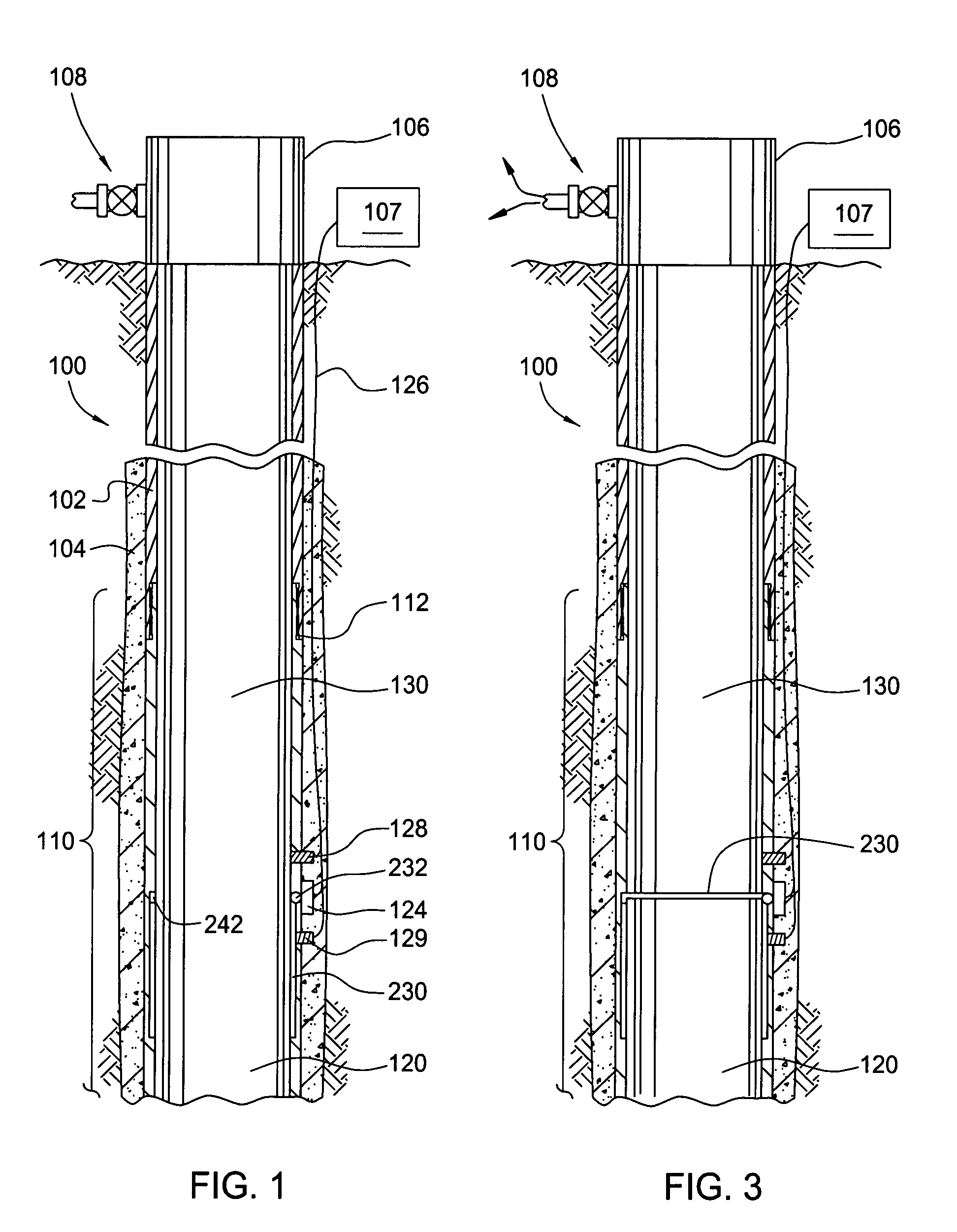Instrumentation for a downhole deployment valve
a technology of deployment valve and instrumentation, which is applied in the direction of instruments, wellbore/well accessories, survey, etc., can solve the problems of inability to know the pressure differential between the flapper and the instrumentation, the tool strings are too long for use with a lubricator, and the mud and damage to formations
- Summary
- Abstract
- Description
- Claims
- Application Information
AI Technical Summary
Problems solved by technology
Method used
Image
Examples
Embodiment Construction
[0044] Placement of one or more seismic sensors on the outside of a casing string reduces the inherent fluid interference and casing string interference with signals which occurs when the seismic sensors are present within the casing string on the production tubing and also increases the proximity of the seismic sensors to the formation, thus allowing provision of more accurate signals and the simplifying of coupling means of the seismic sensors to the formation. Substantially accurate real time measurements of seismic conditions and other parameters are thus advantageously possible during all wellbore operations with the present invention. With the present invention, permanent seismic monitoring upon placement of the casing string within the wellbore allows for accurate measurements of seismic conditions before and after production tubing is inserted into the wellbore.
[0045] Sensors with Downhole Deployment Valves
[0046] FIG. 1 is a section view of a wellbore 100 with a casing strin...
PUM
 Login to View More
Login to View More Abstract
Description
Claims
Application Information
 Login to View More
Login to View More - R&D
- Intellectual Property
- Life Sciences
- Materials
- Tech Scout
- Unparalleled Data Quality
- Higher Quality Content
- 60% Fewer Hallucinations
Browse by: Latest US Patents, China's latest patents, Technical Efficacy Thesaurus, Application Domain, Technology Topic, Popular Technical Reports.
© 2025 PatSnap. All rights reserved.Legal|Privacy policy|Modern Slavery Act Transparency Statement|Sitemap|About US| Contact US: help@patsnap.com



